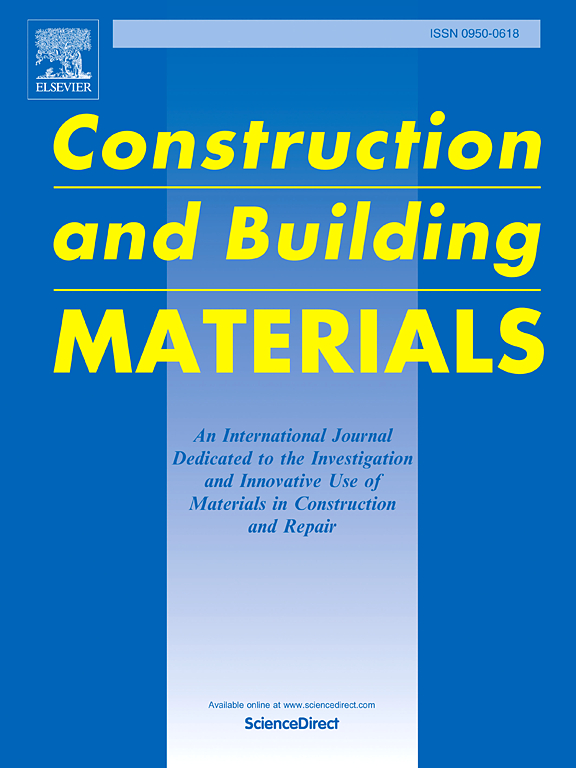Development of self-sensing asphalt cementitious composites using conductive carbon fibre and recycled copper tailing
IF 7.4
1区 工程技术
Q1 CONSTRUCTION & BUILDING TECHNOLOGY
引用次数: 0
Abstract
Disposal of the highly hazardous and large scale solid wastes such as tailings is a global challenge. To mitigate the heavy burden of tailings management while promoting the circular economy, this study combines smart material with tailings recycling, presenting a pioneering investigation into the reutilizing copper tailings (CT) as an alternative to limestone filler (LF) for the development of sustainable carbon fibre (CF)-based self-sensing asphalt concrete. The conductivity, percolation zone, impedance spectroscopy, self-sensing performance, porosity distribution, immobilization of toxic metals, road performance, and cost-benefit analysis were comprehensively examined. The results indicate the incorporating CT enhances high-temperature resistance but reduces low-temperature cracking resistance and increases moisture susceptibility of asphalt concrete when CT substation exceeds 50 %. However, substituting up to 50 % LF with CT meets the road performance criteria. Percolation is observed at approximately 0.1 % – 0.3 % CF for CT/CF asphalt concrete. A novel conductive path-based equivalent circuit model is established based on impedance spectra by separately allocating circuit elements to conductive phases, which is validated by the correlative analysis of variations in equivalent circuit elements and their alignments to percolation theory and the results of conductivity and piezoresistivity. This contributes to the understanding of conductive and sensing mechanisms of CF-based self-sensing asphalt concrete. The findings will advance smart road technology while promote mine waste reutilization for enhanced traffic detection and structural health monitoring.
求助全文
约1分钟内获得全文
求助全文
来源期刊

Construction and Building Materials
工程技术-材料科学:综合
CiteScore
13.80
自引率
21.60%
发文量
3632
审稿时长
82 days
期刊介绍:
Construction and Building Materials offers an international platform for sharing innovative and original research and development in the realm of construction and building materials, along with their practical applications in new projects and repair practices. The journal publishes a diverse array of pioneering research and application papers, detailing laboratory investigations and, to a limited extent, numerical analyses or reports on full-scale projects. Multi-part papers are discouraged.
Additionally, Construction and Building Materials features comprehensive case studies and insightful review articles that contribute to new insights in the field. Our focus is on papers related to construction materials, excluding those on structural engineering, geotechnics, and unbound highway layers. Covered materials and technologies encompass cement, concrete reinforcement, bricks and mortars, additives, corrosion technology, ceramics, timber, steel, polymers, glass fibers, recycled materials, bamboo, rammed earth, non-conventional building materials, bituminous materials, and applications in railway materials.
 求助内容:
求助内容: 应助结果提醒方式:
应助结果提醒方式:


